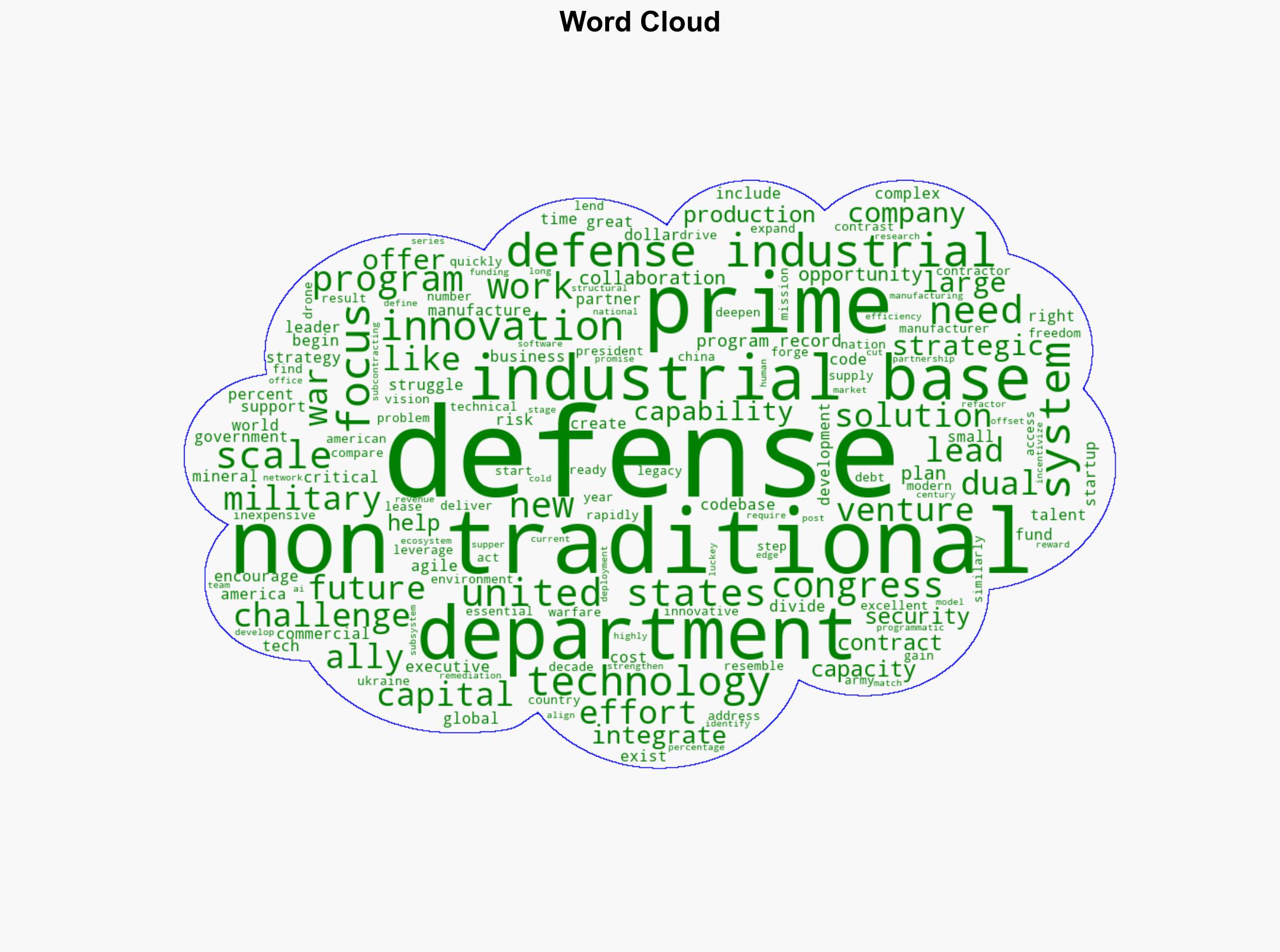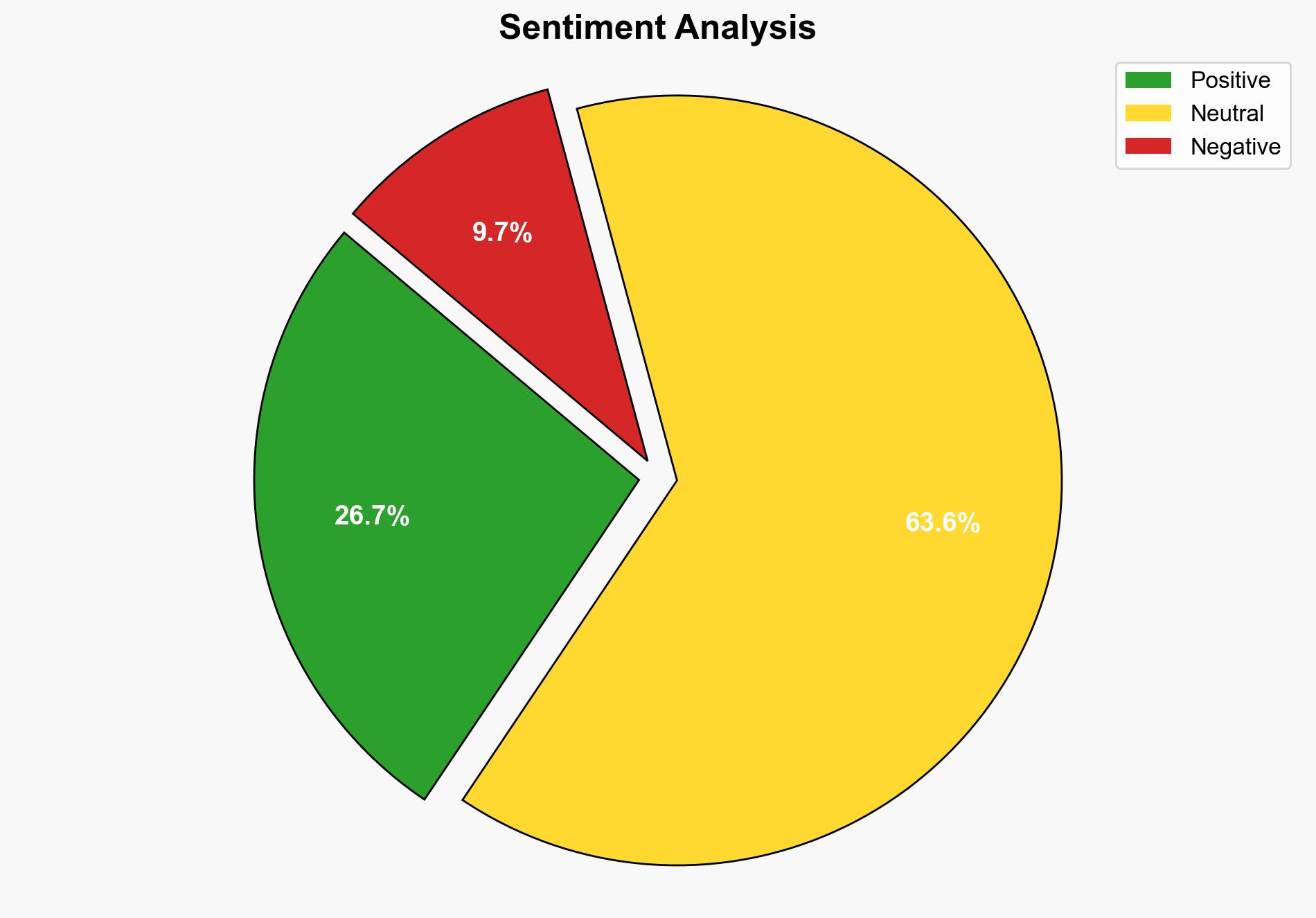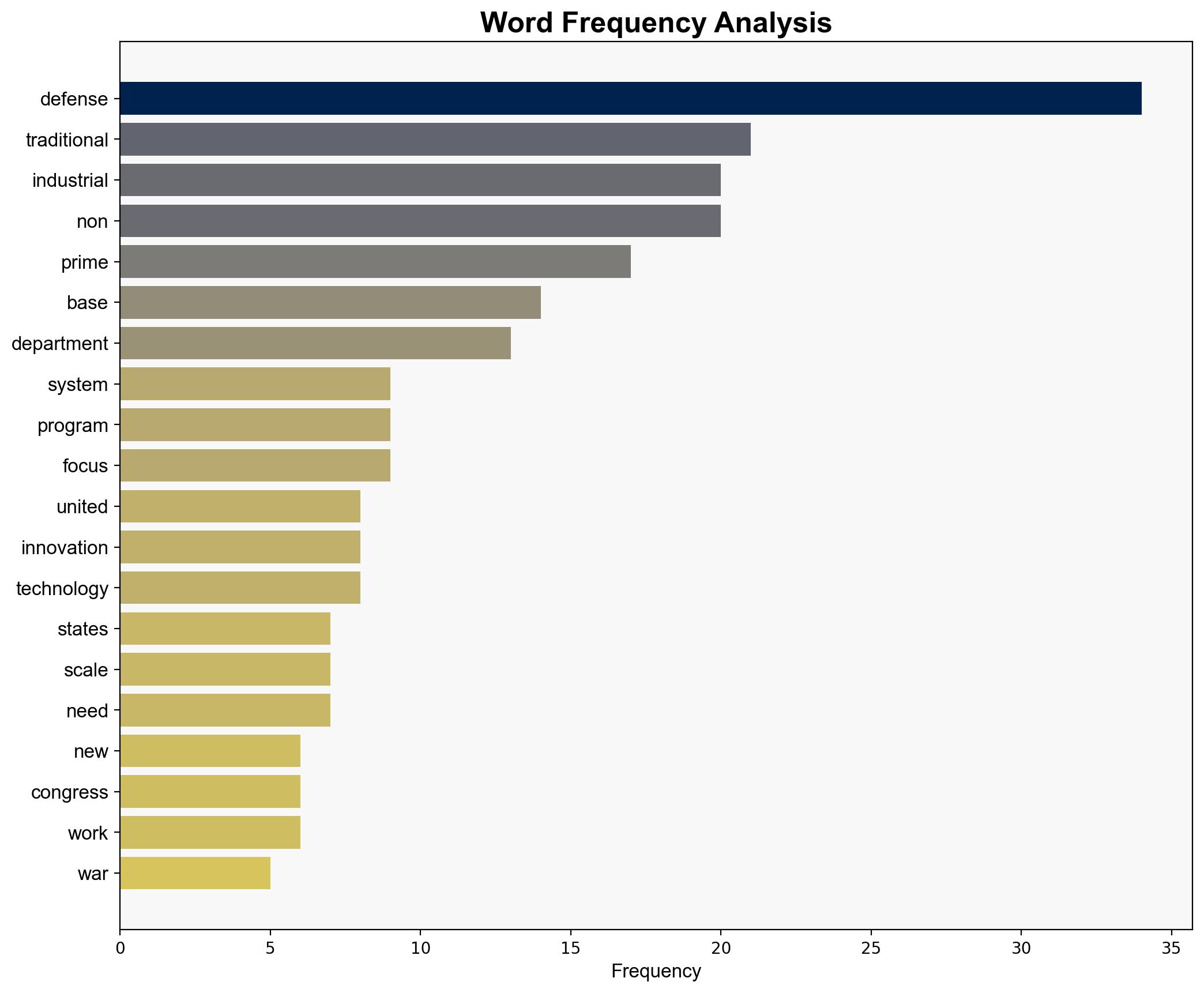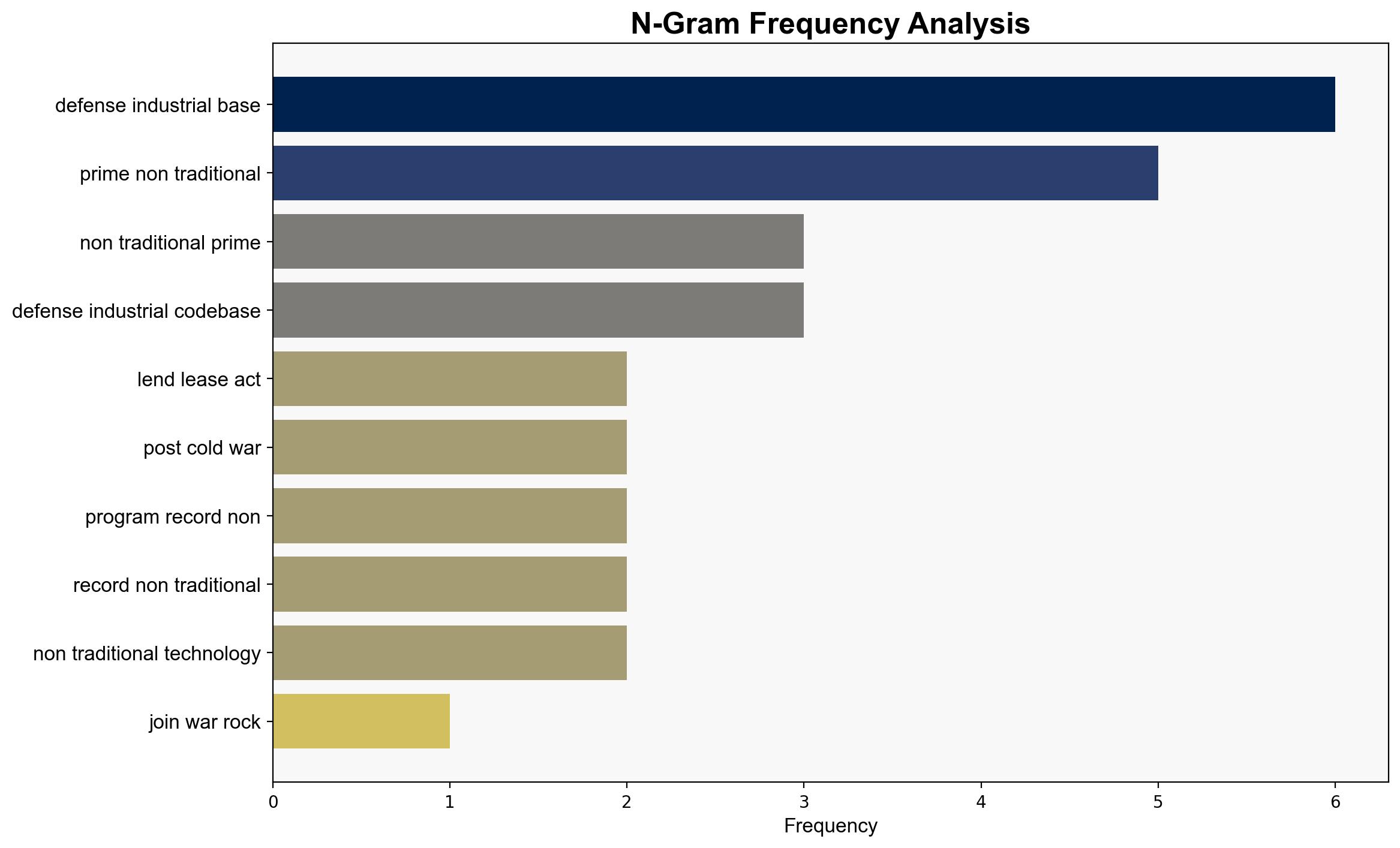A Guide to Refactoring the Defense-Industrial Base – War on the Rocks
Published on: 2025-06-05
Intelligence Report: A Guide to Refactoring the Defense-Industrial Base – War on the Rocks
1. BLUF (Bottom Line Up Front)
The current state of the U.S. defense-industrial base is characterized by a divide between traditional defense contractors and emerging non-traditional companies. This divide poses strategic risks, as traditional contractors are seen as slow and risk-averse, while non-traditional companies struggle with integration into existing systems. The report highlights the need for a cohesive strategy to bridge this gap, leveraging innovative solutions while maintaining compatibility with legacy systems. Recommendations focus on fostering collaboration and enhancing agility to address emerging threats effectively.
2. Detailed Analysis
The following structured analytic techniques have been applied to ensure methodological consistency:
Causal Layered Analysis (CLA)
Surface events include the use of inexpensive commercial systems by adversaries to impose asymmetric costs. Systemic structures reveal a split in the industrial base, with traditional contractors and non-traditional companies operating in silos. Worldviews are shaped by historical success in industrial mobilization during global conflicts. Myths revolve around the belief in technological superiority without addressing integration challenges.
Cross-Impact Simulation
The increasing reliance on commercial off-the-shelf systems by adversaries could lead to a tactical deficit for the U.S. The ripple effects include potential vulnerabilities in supply chains and increased pressure on traditional contractors to innovate.
Scenario Generation
Scenarios explore the potential outcomes of either successfully integrating non-traditional companies into the defense-industrial base or failing to do so. A successful integration could lead to enhanced capabilities and faster response times, while failure may result in continued inefficiencies and increased risks.
Network Influence Mapping
Mapping the relationships between traditional contractors, non-traditional companies, and government agencies reveals key influence points that can be leveraged to foster collaboration and innovation.
3. Implications and Strategic Risks
The divide within the defense-industrial base presents systemic vulnerabilities, particularly in adapting to rapidly evolving threats. The reliance on outdated systems and processes increases the risk of technical debt and inefficiencies. Emerging threats from adversaries using cost-effective technologies highlight the need for a more agile and integrated industrial base.
4. Recommendations and Outlook
- Foster collaboration between traditional and non-traditional companies to enhance innovation and integration.
- Invest in upgrading legacy systems to reduce technical debt and improve compatibility with new technologies.
- Develop a strategic framework for rapid industrial mobilization in response to emerging threats.
- Scenario-based projections suggest that successful integration could lead to a more resilient and responsive defense-industrial base, while failure may exacerbate existing vulnerabilities.
5. Key Individuals and Entities
Dwight Eisenhower, Arthur Herman
6. Thematic Tags
national security threats, defense-industrial base, innovation, strategic foresight





